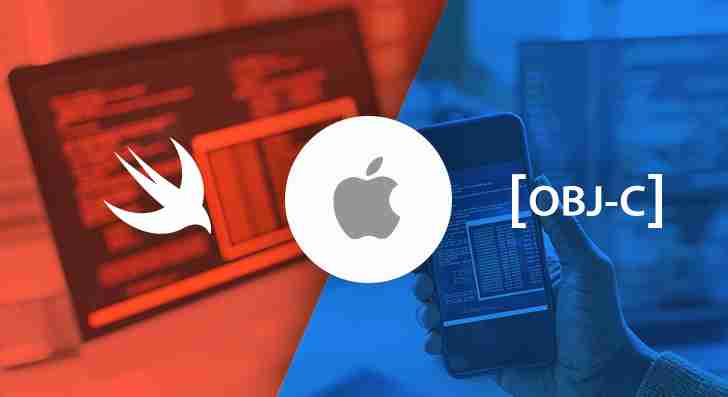Introduction to iOS Development
iOS development refers to the process of creating applications for Apple’s mobile devices, such as iPhones, iPads, and iPods. It involves coding, designing, testing, and deploying software tailored specifically for the iOS platform.
Overview of Swift and Objective-C
Swift and Objective-C are the two primary programming languages used for iOS development. While Objective-C has existed for many years, Swift is a newer programming language that Apple introduced in 2014
History and Evolution of Swift and Objective-C
Objective-C has been the go-to language for iOS development since the inception of the iOS platform. It is a superset of the C programming language and has been the foundation for many successful iOS applications.
In contrast, Swift came onto the scene thanks to Apple, offering a more contemporary option compared to Objective-C It aimed to address some of the shortcomings of Objective-C and provide developers with a more efficient and intuitive language for iOS development.
Syntax and Readability
Swift Syntax
Swift boasts a cleaner and more concise syntax compared to Objective-C. It incorporates modern programming concepts and features, such as optionals, closures, and type inference, which enhance readability and reduce boilerplate code.
Objective-C Syntax
Objective-C syntax, while powerful, can appear verbose and cumbersome to beginners. It relies heavily on square brackets and follows a messaging syntax for method calls, which can sometimes be confusing for developers transitioning from other languages.
Performance and Speed
Swift is generally considered to be faster and more performant than Objective-C. Its modern compiler and runtime optimizations contribute to improved speed and efficiency, resulting in faster app execution and better overall performance.
Memory Management
Swift employs Automatic Reference Counting (ARC) for memory management, relieving developers from the burden of manual memory management tasks. Objective-C, on the other hand, requires developers to manage memory explicitly using retain and release statements.
Community Support and Resources
Swift has rapidly gained popularity among iOS developers and boasts a thriving community. There are abundant resources, tutorials, and open-source libraries available for Swift development, making it easier for developers to learn and grow their skills.
Objective-C, being the older language, still enjoys substantial community support and a wealth of resources. However, the momentum has shifted towards Swift, with many developers and companies embracing it as their primary language for iOS development.
Interoperability with Other Languages
Swift is designed to work seamlessly with Objective-C, allowing developers to integrate Swift code into existing Objective-C projects and vice versa. This interoperability enables a smooth transition for developers migrating from Objective-C to Swift and promotes code reusability and compatibility.
Learning Curve and Accessibility
Swift’s modern syntax and intuitive language design make it more accessible to beginners and experienced developers alike. Its similarity to other modern programming languages, such as Python and JavaScript, facilitates a smoother learning curve and faster adoption.
Objective-C, while powerful, has a steeper learning curve due to its unique syntax and messaging conventions. However, developers proficient in C and object-oriented programming can quickly adapt to Objective-C with practice and patience.
Tooling and Development Environment
Xcode, Apple’s integrated development environment (IDE), provides comprehensive support for both Swift and Objective-C development. It offers features such as code highlighting, autocompletion, and debugging tools, enhancing the development experience for iOS developers.
Future Trends and Popularity
Swift continues to gain traction in the iOS development community and is widely regarded as the future of iOS programming. Its modern features, performance enhancements, and strong community support position it as the preferred choice for building iOS applications.
Objective-C, while still prevalent in legacy projects, is gradually being phased out in favor of Swift. Many companies and developers are transitioning their codebases to Swift to leverage its benefits and stay relevant in the evolving iOS ecosystem.
Case Studies and Success Stories
Numerous successful iOS applications have been built using both Swift and Objective-C. Companies like Airbnb, Lyft, and LinkedIn have embraced Swift for its performance, readability, and maintainability, achieving significant success in the iOS app market.
Decision Making: Choosing Between Swift and Objective-C
When deciding between Swift and Objective-C for iOS development, developers should consider factors such as project requirements, team expertise, and long-term goals. While Swift offers modern features and performance advantages, Objective-C may be preferred for legacy projects or compatibility reasons.
Ultimately, the choice between Swift and Objective-C depends on the specific needs and constraints of each project, as well as the preferences and skills of the development team.
How can TechDotBit help you about iOS development?
TechDotBit can assist you with iOS development in several ways. From providing comprehensive tutorials and guides on Swift and Objective-C programming languages to offering tips, best practices, and troubleshooting solutions, TechDotBit equips you with the knowledge and resources you need to excel in iOS development. Whether you’re a beginner looking to learn the basics or an experienced developer seeking advanced techniques, TechDotBit serves as your go-to platform for valuable insights and support in iOS app development.
Reach out to us today in order to learn more about how we can help you create iOS applications in your organization.
Conclusion
In conclusion, both Swift and Objective-C are capable languages for iOS development, each with its strengths and weaknesses. Swift offers modern syntax, improved performance, and a vibrant community, making it a compelling choice for building iOS applications. However, Objective-C remains relevant in certain scenarios and continues to power many existing iOS projects.
As the iOS ecosystem continues to evolve, developers should stay abreast of new developments and choose the language that best aligns with their project requirements and development goals.
FAQs on Swift vs Objective-C
- Which language is easier to learn, Swift or Objective-C?
- Swift is generally considered easier to learn due to its modern syntax and intuitive language design.
- Is Objective-C still relevant in iOS development?
- Yes, Objective-C is still relevant, especially in legacy projects and scenarios requiring interoperability with existing Objective-C codebases.
- Does Swift perform better than Objective-C?
- Yes, Swift is generally faster and more performant than Objective-C due to its modern compiler and runtime optimizations.
- Can I use Swift and Objective-C together in the same project?
- Yes, Swift and Objective-C are interoperable, allowing developers to seamlessly integrate code written in both languages within the same project.
- Which language should I choose for my iOS project: Swift or Objective-C?
- The choice between Swift and Objective-C depends on factors such as project requirements, team expertise, and long-term goals. Consider the strengths and weaknesses of each language before making a decision.








